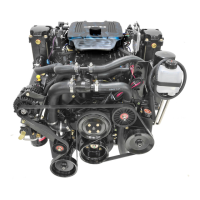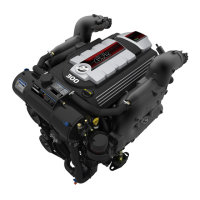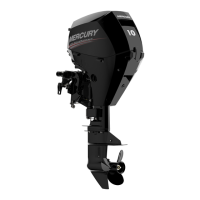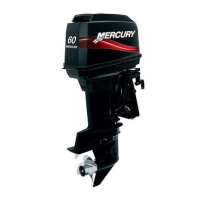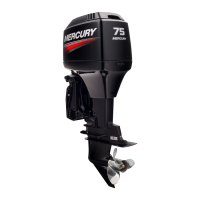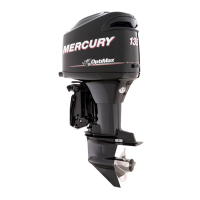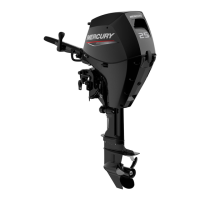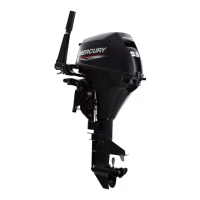GENERAL INFORMATION
90-827242R02 FEBRUARY 2003 Page 1C-9
Compression Check
Normal Compression (All Models) 787 – 856 kPa (115 – 125 psi)
1. Remove spark plugs.
2. Install compression gauge in spark plug hole.
3. Hold throttle plate at W.O.T.
4. Crank the engine over until the compression reading peaks.
5. Check and record compression of each cylinder. The difference in compression
readings between each cylinder should not vary more than 15%. If compression varies
by more than 15% or compression for both cylinders is less than 685kPa (100psi), the
powerhead should be disassembled and inspected.
6. Compression check is important because an engine with low or uneven compression
cannot be tuned successfully to give peak performance. It is essential, therefore, that
improper compression be corrected before proceeding with an engine tuneup.
7. Cylinder scoring: If powerhead shows any indication of overheating, such as discolored
or scorched paint, visually inspect cylinders for scoring or other damage. Refer to
Section 4 Powerhead.
Painting Procedures
Cleaning & Painting Aluminum Propellers & Gear Housings
WARNING
Avoid serious injury from flying debris. Avoid serious injury from airborne
particles. Use eye and breathing protection with proper ventilation.
PROPELLERS
1. Sand the entire area to be painted with 3M 120 Regalite Polycut or coarse Scotch-Brite,
disc or belts.
2. Feather edges of all broken paint edges. Try not to sand through the primer.
3. Clean the surface to be painted using PPG Industries DX330 Wax and Grease Remover
or equivalent (Xylene or M.E.K.).
4. If bare metal has been exposed, use Mercury/Quicksilver’s Light Gray Primer.
5. Allow a minimum of 1 hour dry time and no more than 1 week before applying the finish
coat.
6. Apply the finish coat using Mercury/Quicksilver’s EDP Propeller Black.
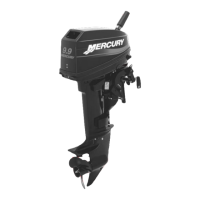
